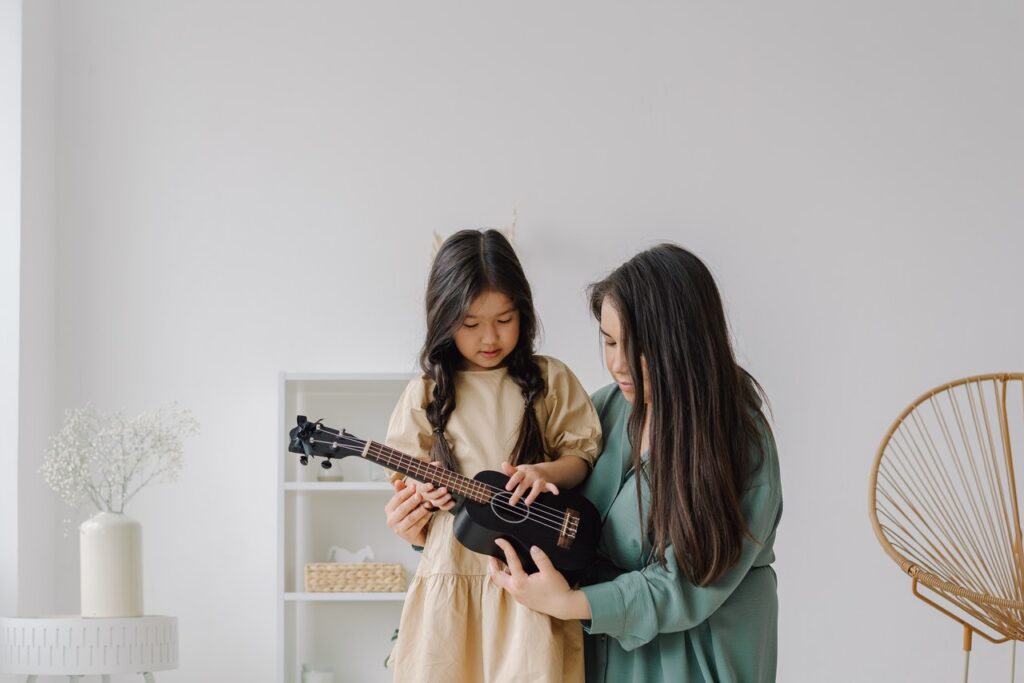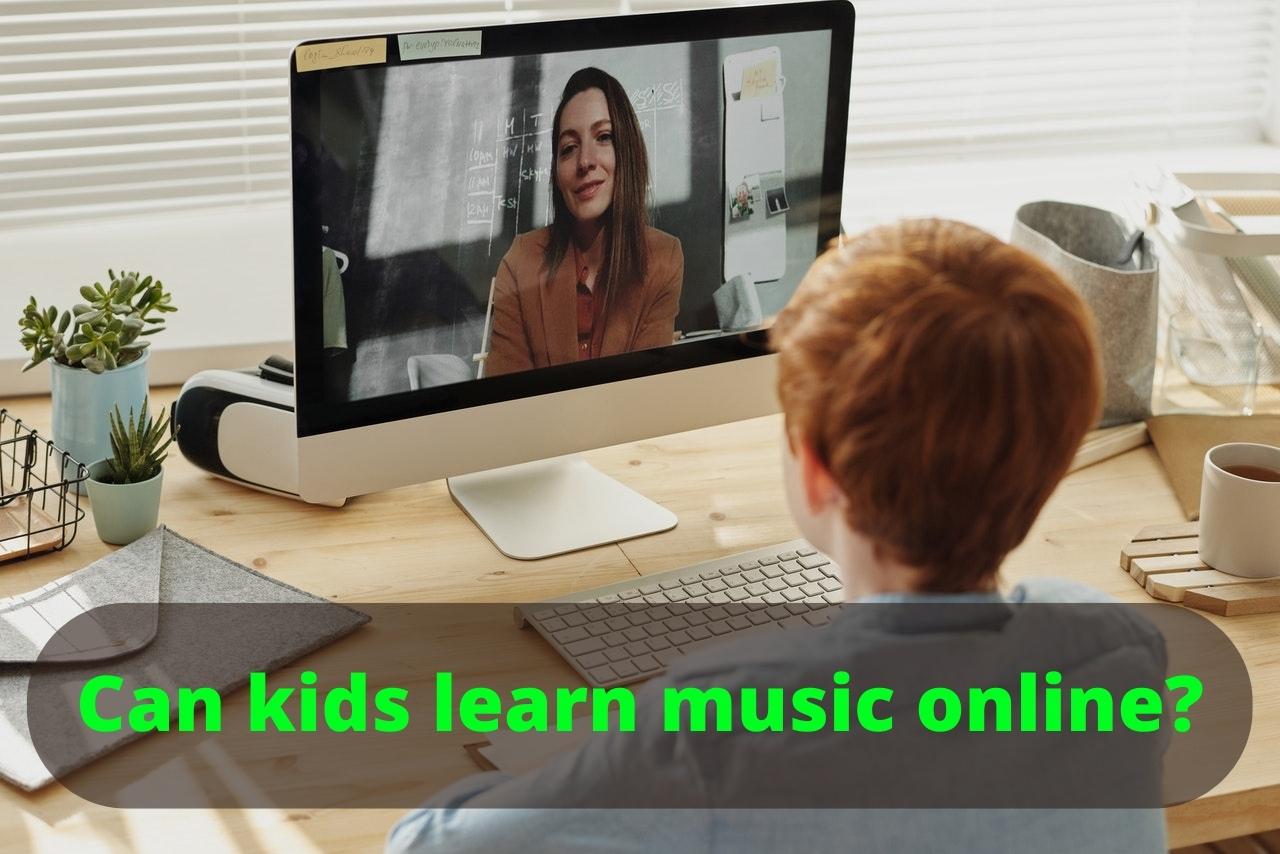Children have a natural affinity for music. Sadly, the subject is slipping from school curricula and music lessons can be prohibitively expensive. So, parents and caregivers are increasingly taking a DIY approach to provide their kids with a musical education. It’s tricky to know how to teach your kids music though, especially without a musical background.
So, if you want to teach your kids music at home but are not sure where to start, we’ve rounded up a few ideas and resources to get you started.
Why teach your kids music?
The benefits of a musical education are well established. Learning music develops neural pathways in the brain and helps children to thrive in other areas of their education. It also helps kids improve their listening skills, teaches them about the value of practice and teamwork, and encourages them to express themselves creatively.
What are the main methods for teaching music?
There are lots of ways to teach your children music at home. If you’re wondering where to begin, don’t worry. Musicians have developed several effective, fun systems, each with different aims and objectives. So don’t feel you need to reinvent the wheel! You just need to find the method that suits you and your kids the best. There are plenty of books, websites, and apps available to help you understand and use each system, so spend some time exploring.
The four most popular methods for teaching music are:
- The Orff-Schulwerk method: A play-centered approach made up of four stages. Kids begin with imitation, before moving on to exploration, improvisation, and finally composition.
- The Kodaly method: Focuses on vocal techniques and singing as fundamental to musicianship. Hand signs and rhythmic syllables are used, along with strictly high-quality music and materials.
- Dalcroze Eurhythmics: A multi-sensory approach that emphasizes movement, improvisation, and spontaneous physical responses to develop rhythm and structure.
- The Suzuki Method: Sometimes called the ‘mother-tongue approach,’ the Suzuki method applies the principles of language acquisition to music. Parents are encouraged to be heavily involved in the learning process.
There are also other popular systems to explore, including:
There’s no need to be too rigid when choosing the methods you want to use. Just go with what looks the most interesting and fun! It can also be helpful to combine aspects from different methods. You’ll find plenty of similarities across the different approaches, including:
- A focus on developing creative expression
- Exposure to music from various cultures
- The use of solfège systems and hand signs
- An emphasis on dancing and movement
How to teach children the basics of music

Most of us have some understanding of the basics of music and can get teaching pretty much straight away. It’s a good idea to familiarize yourself with the concepts and terms involved, but it can also be fun to learn along with your child. As long as you use high-quality resources and materials you’ll be fine!
Kids under 6
For very young children, the best thing you can do to teach them music is to explore it with them. At this age, there’s no need to do any formal teaching, by simply allowing kids to experiment and experience sound you’ll be enabling them to learn plenty.
Having lots of simple instruments around will encourage your kids to learn while they play. There are countless musical toys, instruments, and games out there for young kids, but don’t feel you have to buy lots of equipment. Kids are often just as happy banging a wooden spoon on a pan as they are playing with fancy toys!
Introducing kids to different styles is a great way to get them excited about music. Don’t be afraid to explain technical terms like rhythm, tempo, and pitch, but don’t force it. Only bring terms up if they’re relevant in the moment, and don’t expect children to remember them.
Once you get going, you’ll find you can turn pretty much any activity into a fun musical exercise. Here are a few ideas to get started:
- Listen to your heartbeats together and beat out the rhythm
- Sing together whenever you get the chance – even when there’s no music
- Listen to recordings of other kids singing to develop their inner ear
- Sing a phrase then get them to repeat it – this is quite challenging so don’t expect perfection!
- Get together with other kids to listen to and play music
Older kids
As kids get older, you can introduce them to more technical aspects of music and use a more structured approach. Understanding notes and notation systems, explorations of rhythm, tempo, and pitch, and learning how to play an instrument are all appropriate. There’s no need to buy expensive instruments – it’s perfectly possible to teach and learn using only voices.
It’s a good idea to use one or more of the methods mentioned earlier. These systems are specially developed to help kids learn and have been tested over many years. No matter what method you use, the most important thing is that they enjoy it. If they aren’t having fun, they won’t learn as well as they could and they probably won’t want to continue for long.
The activities that work well for younger children also work well for this age group. Singing and listening to music together, getting together with others, and experimenting with different instruments are all great ways to explore the subject.
Technology is your friend, too. There are so many fantastic resources for learning music out there – take a look at our introduction to learning music online for some inspiration.

Here are a few tips for teaching older kids music:
- Use the system that suits you both best, and don’t be afraid to mix it up!
- Introduce technical terms a few at a time as they become relevant
- Keep sessions short and sweet, with plenty of variety
- Encourage experimentation and improvisation
- Don’t forget about technology – explore online resources and apps
Moving beyond the basics
Once your kids have a handle on the basics, you have several options. If your child is very motivated and well organized, they might prefer to take charge of their studying. Parents and caregivers can take more of a supporting role here – providing materials and guidance where necessary but pretty much letting the child set the agenda.
For kids that are not so self-motivated (and that’s most of them!), this can be where their interest starts to drop off. As the subject gets more difficult, it can be challenging to keep kids engaged. Once again, the thing to remember is to have fun – don’t force anything and keep sessions short, snappy and relevant.
You might find your kids dip in and out and their interest seems to wax and wane. This is natural as kids are constantly testing and exploring their interests. Be supportive whichever way their interest is going, and don’t express anger or disappointment if they lose interest for a while. Gently encourage them back towards music, but don’t force the issue.
Here are a few tips for this stage:
- Get your kids invested in setting their own goals
- Try introducing new instruments – allow the child to choose
- Incorporate the music that your kids are interested in
- Encourage them to compose their own music and write their own songs
- Keep singing and listening to music together
You can do it!
Hopefully, you now feel prepared to tackle teaching your kids music at home. It might be daunting at first, but there are so many benefits and so much fun to be had it would be a mistake not to give it a try.
There are thousands of fantastic resources out there to help, and finding the ones that suit your family has never been easier. Remember – as long as your kids are having fun with music, they’re learning. And when you become the teacher, you’re likely to learn a lot too!
Written by: Liz Sullivan